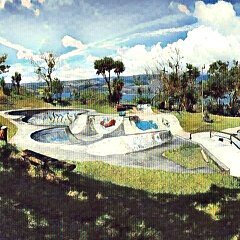Skate parks not only serve as a venue for roller and inline skaters to practice their skills but also offer a unique opportunity to socialize, connect with like-minded individuals, and form lasting friendships. Here are some tips for making the most of the social aspect of skate parks:
A. Engaging with fellow skaters
Be approachable and friendly: Smile, make eye contact, and engage in small talk with fellow skaters. Showing genuine interest in others and their experiences can create a positive impression and encourage conversation.
Offer support and encouragement: Applaud others successes and provide encouragement during their attempts. By fostering a supportive atmosphere, you can help create a sense of camaraderie and community among skaters.
Share tips and advice: If you notice someone struggling with a particular trick or technique, offer guidance or share your own experiences. Helping others can strengthen connections and establish you as a valuable member of the community.
B. Participating in events and activities
Join skate clinics and workshops: Attending organized events such as skate clinics and workshops can help you meet other skaters, learn from experienced instructors, and improve your skills. These events often cater to various skill levels and can provide a fun and engaging way to connect with others.
Participate in competitions and contests: Skate park competitions and contests offer a chance to showcase your skills, challenge yourself, and engage with other skaters. Even if you're not competing, attending these events as a spectator can be a great opportunity to network and socialize.
Attend social gatherings and meetups: Look for local skate-related meetups or social events organized by skate shops, clubs, or online communities. These gatherings provide a relaxed environment to interact with fellow skaters and build your network.
C. Building connections online
Join online communities: Social media platforms, forums, and skate-specific websites offer a wealth of resources and opportunities to connect with other skaters. Join groups and discussions relevant to your interests, and contribute by sharing your experiences, asking questions, or offering advice.
Share your progress: Document your skate park journey by posting photos, videos, or updates on social media. This can help you connect with others who share your passion and facilitate conversations with fellow skaters.
By actively engaging in social activities, offering support, and connecting with others in the roller and inline skating community, you can make the most of the social aspect of skate parks. This not only enriches your skating experience but also contributes to a vibrant, inclusive, and supportive environment for everyone to enjoy.






